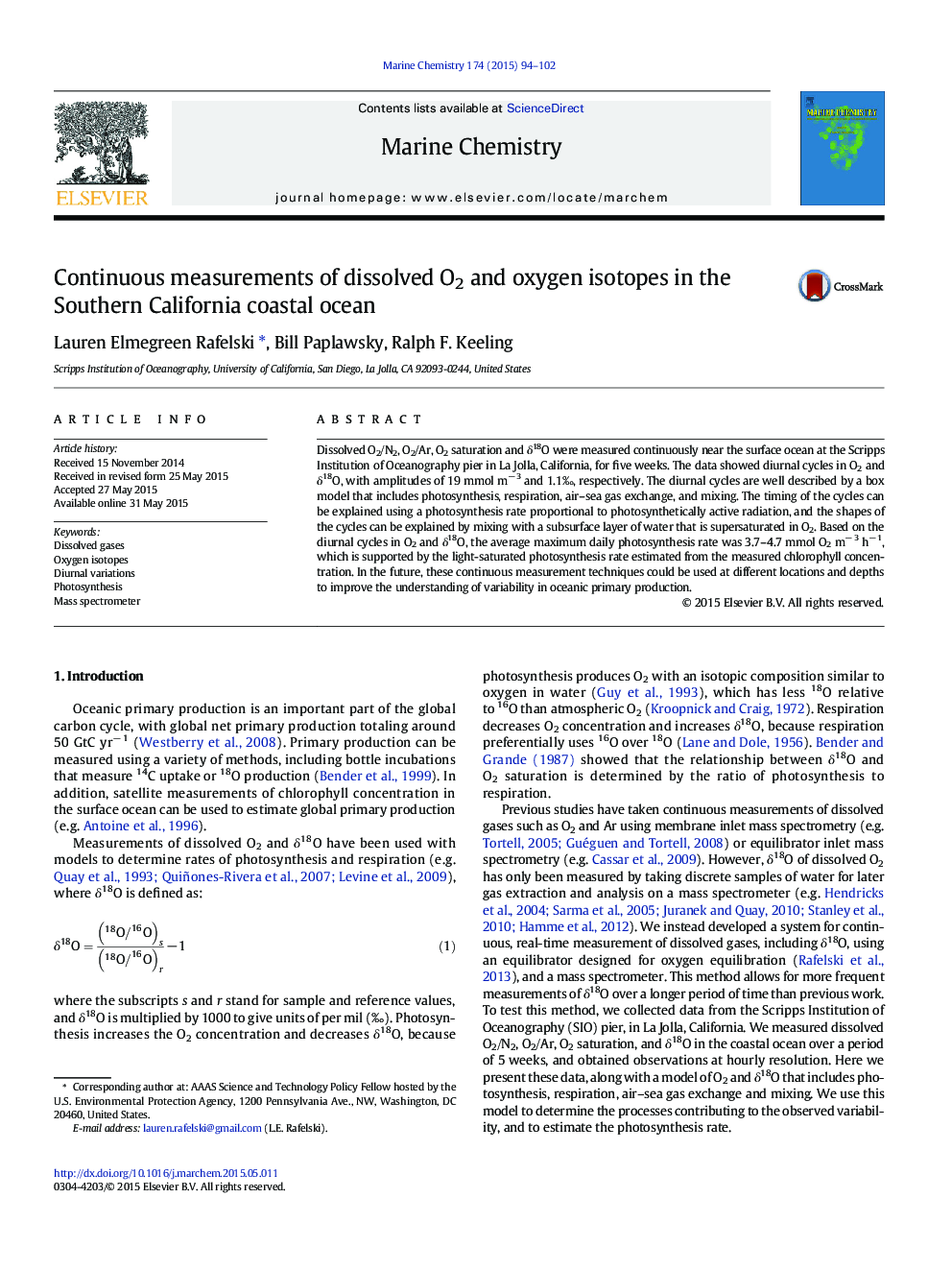| Article ID | Journal | Published Year | Pages | File Type |
|---|---|---|---|---|
| 7699303 | Marine Chemistry | 2015 | 9 Pages |
Abstract
Dissolved O2/N2, O2/Ar, O2 saturation and δ18O were measured continuously near the surface ocean at the Scripps Institution of Oceanography pier in La Jolla, California, for five weeks. The data showed diurnal cycles in O2 and δ18O, with amplitudes of 19 mmol mâ 3 and 1.1â°, respectively. The diurnal cycles are well described by a box model that includes photosynthesis, respiration, air-sea gas exchange, and mixing. The timing of the cycles can be explained using a photosynthesis rate proportional to photosynthetically active radiation, and the shapes of the cycles can be explained by mixing with a subsurface layer of water that is supersaturated in O2. Based on the diurnal cycles in O2 and δ18O, the average maximum daily photosynthesis rate was 3.7-4.7 mmol O2 mâ 3 hâ 1, which is supported by the light-saturated photosynthesis rate estimated from the measured chlorophyll concentration. In the future, these continuous measurement techniques could be used at different locations and depths to improve the understanding of variability in oceanic primary production.
Related Topics
Physical Sciences and Engineering
Chemistry
Chemistry (General)
Authors
Lauren Elmegreen Rafelski, Bill Paplawsky, Ralph F. Keeling,
